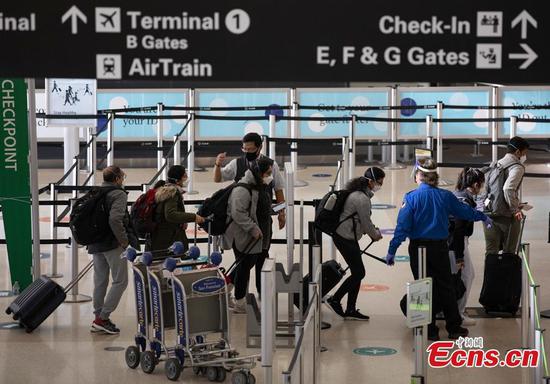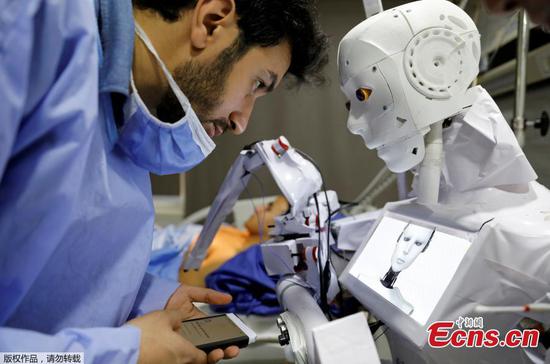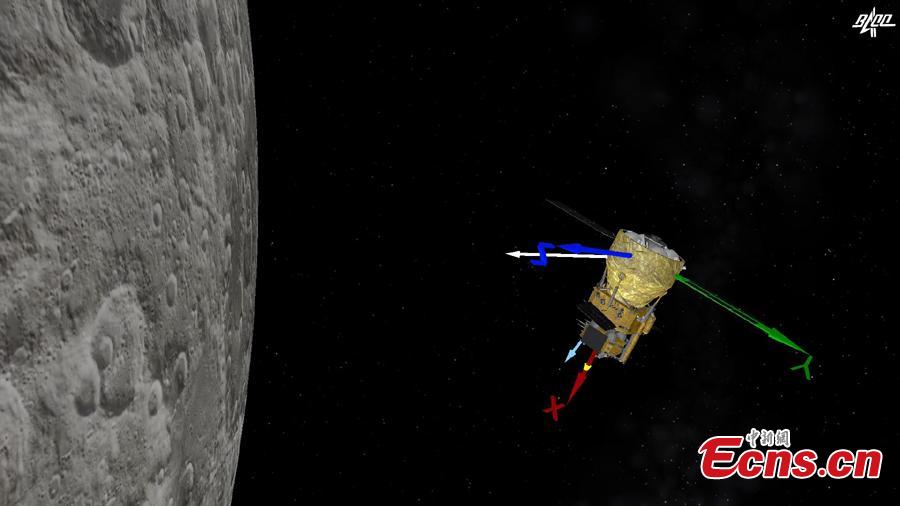
This image provided by the Beijing Aerospace Control Center (BACC) shows China's Chang'e-5 probe performed braking for the second time at 20:23 p.m. Sunday (Beijing Time), according to the China National Space Administration (CNSA).
After the deceleration, the probe started flying in a near circular orbit from an elliptical path around the moon, said the CNSA. (Photo provided by BACC)
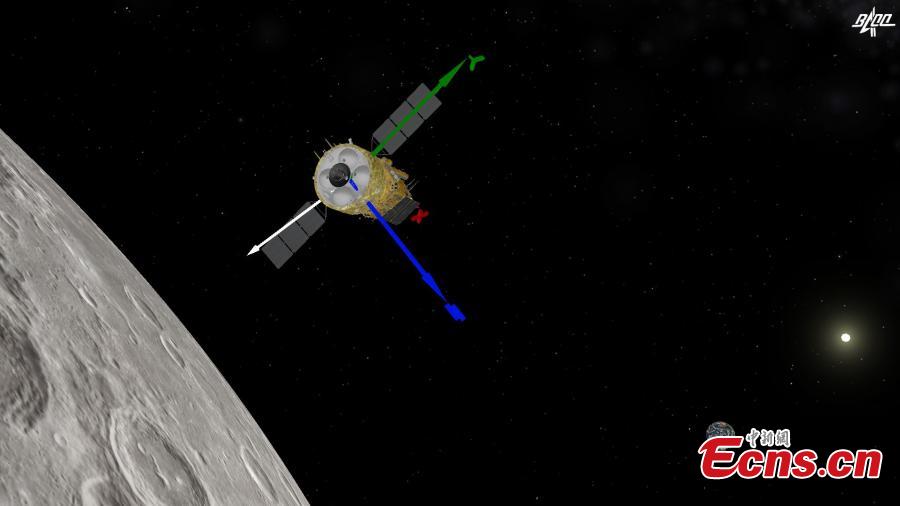
This image provided by the Beijing Aerospace Control Center (BACC) shows China's Chang'e-5 probe performed braking for the second time at 20:23 p.m. Sunday (Beijing Time), according to the China National Space Administration (CNSA).
After the deceleration, the probe started flying in a near circular orbit from an elliptical path around the moon, said the CNSA. (Photo provided by BACC)
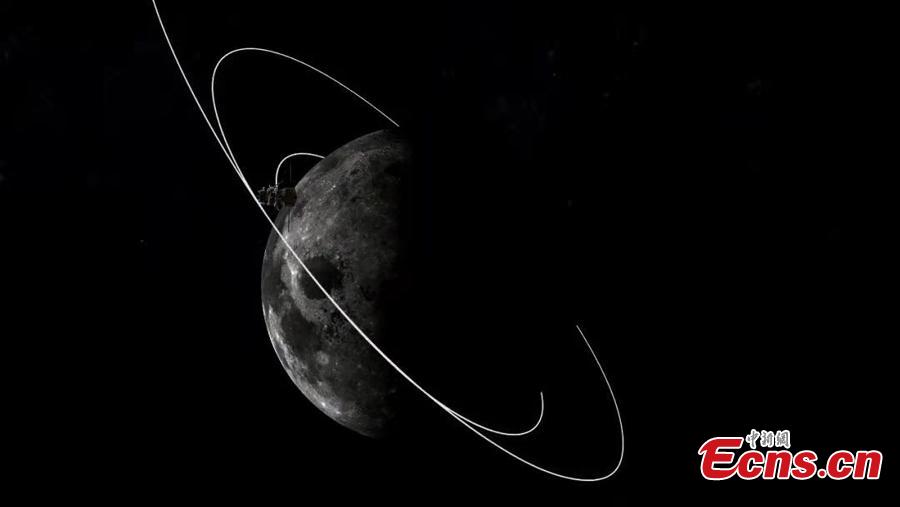
This image provided by the Beijing Aerospace Control Center (BACC) shows China's Chang'e-5 probe performed braking for the second time at 20:23 p.m. Sunday (Beijing Time), according to the China National Space Administration (CNSA).
After the deceleration, the probe started flying in a near circular orbit from an elliptical path around the moon, said the CNSA. (Photo provided by BACC)
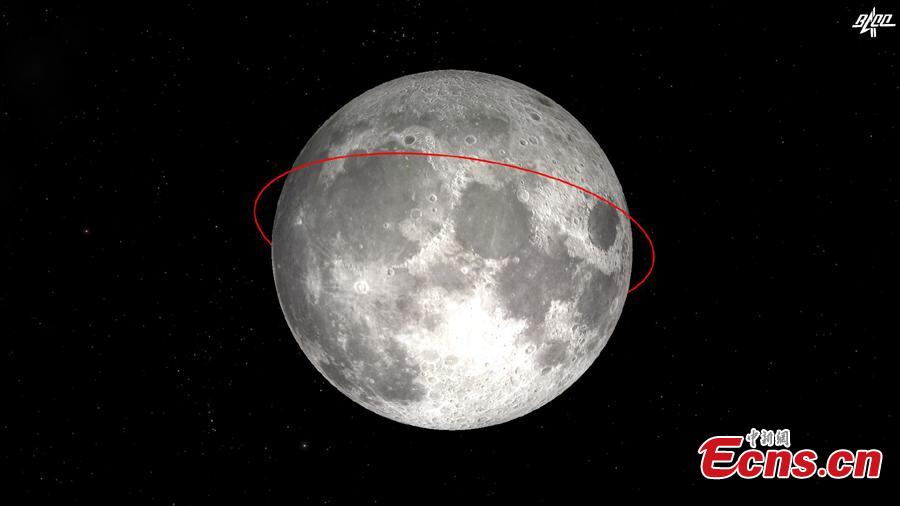
This image provided by the Beijing Aerospace Control Center (BACC) shows China's Chang'e-5 probe performed braking for the second time at 20:23 p.m. Sunday (Beijing Time), according to the China National Space Administration (CNSA).
After the deceleration, the probe started flying in a near circular orbit from an elliptical path around the moon, said the CNSA. (Photo provided by BACC)












